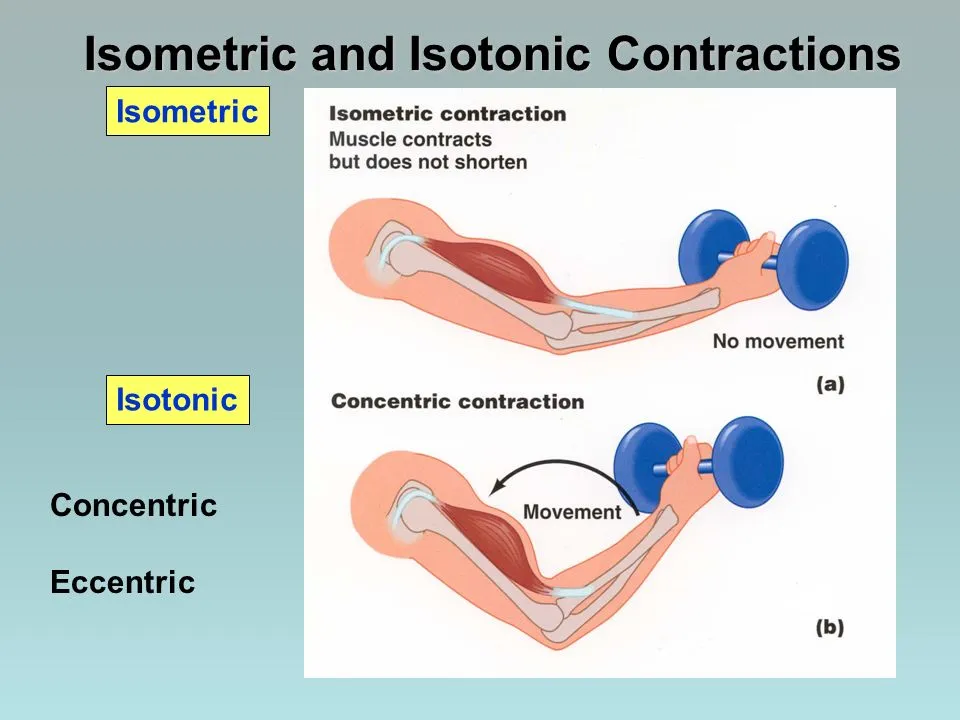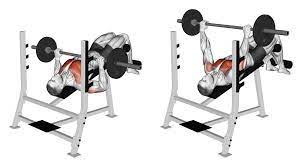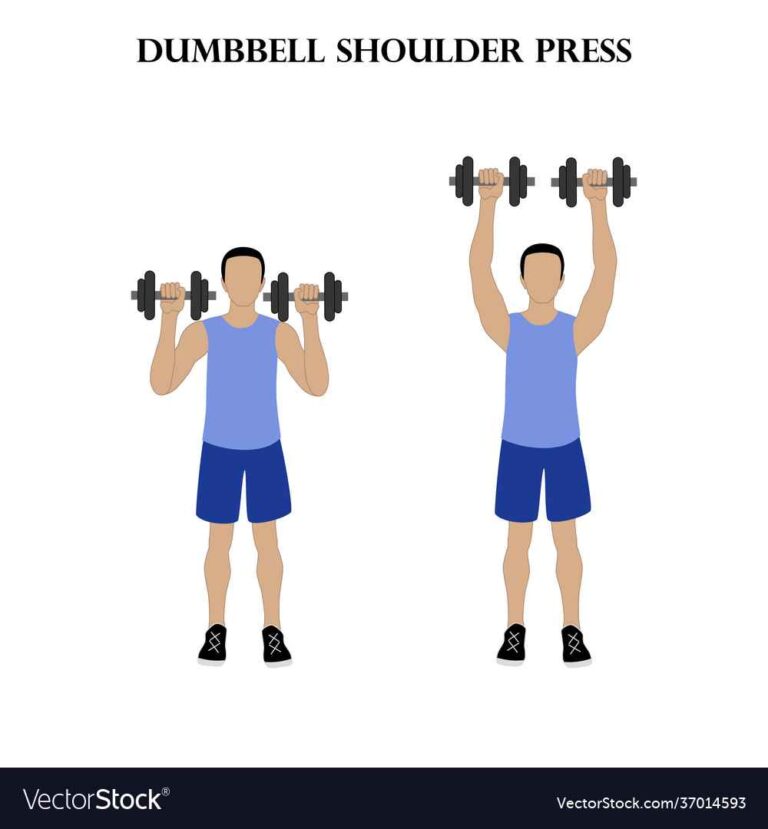Isotonic exercises
What is an Isotonic Exercise?
An isotonic exercise is a type of physical activity that involves contracting and lengthening muscles through a full range of motion. The term “isotonic” comes from the Greek words “iso” (equal) and “tonos” (tension), indicating that the tension in the muscles remains constant throughout the exercise.
In isotonic exercises, the muscles involved in the movement work against constant resistance, typically provided by free weights, weight machines, or the body’s own weight. The goal is to create muscle contractions that result in movement and contribute to muscle strength, endurance, and overall fitness.
Isotonic Exercise changes the length of the muscle while maintaining the same tension.
Muscles shorten when the concentric contraction occurs, producing force.
Muscles extend as a result of eccentric contractions in reaction to a stronger opposing force.
In comparison, Isometric contractions increase muscular force without altering the muscle’s length.
In comparison with isokinetic exercise, an isotonic contraction will keep force constant while velocity changes, whereas an isokinetic contraction will keep velocity constant while force changes as the muscle’s force change due to the length-tension relationship during a contraction.
2 forms of Isotonic contractions:
Auxotonic contraction is also a contraction that is close to being isotonic.
There are two types of isotonic exercises:
Concentric and eccentric contractions are two different kinds of isotonic contractions. When a muscle shortens during a concentric contraction, the tension in the muscle increases to meet the resistance. When eccentric, resistance causes the muscle to lengthen.
- Concentric:
The muscle is being pulled by an external force, which is less than the force the muscle is producing as it contracts shorter. The level parallel to the floor is where tension is at its peak; above and below this point, tension decreases. As a result, both tension and muscle length change. This is called a concentric contraction. All exercise takes this form.
- Eccentric:

Eccentric training is a form of strength training in which the target muscles are used to manage weight as it goes downward. A contraction that is eccentric is the motion of an eccentric skeletal muscle contraction performed repeatedly. The muscle that is active when lengthening under stress.
There are two key characteristics of eccentric contractions to be aware of. First off, compared to the muscle’s maximum capacity for generating tone tension, the tensions achieved can be extremely increased (you can set down a much heavier object than you can lift). Second, such tension is relatively independent of increasing velocity.
Eccentric contraction has been associated with muscle injury and pain. Exercises involving eccentric contractions have a lower effect on muscle strength than exercises involving concentric contractions. However, because higher levels of tension are simpler to achieve during exercises involving eccentric contractions, it’s possible that muscle hypertrophy is better than exercises involving concentric contractions, though at a higher level of resistance because it produces higher signals for muscle strengthening.
- Auxotonic contraction:
Because there is some fluctuation near the end of the contraction, auxotonic contraction is almost isotonic. As an example, the heart’s ventricles contract to push blood into the aorta and pulmonary artery. The previous built-up load decreases as the blood flows out, requiring less force to eject the remaining blood. Thus the tension is reduced.
What kinds of exercises are isotonic examples?
The majority of the exercises you currently perform are probably isotonic. You can perform an isotonic exercise as long as you move your joints and contract your muscles in response to resistance.
This comprises:
Exercises that involve resistance, such as curls, bench presses, squats, and pull-ups.
Aerobic exercises, for example, cycling and running.
The majority of athletic movements (e.g. playing with a bat, playing a football, etc…).
Even routine tasks like painting a fence are probably considered an isotonic exercise.
Difference between isometric and isotonic exercises:

Isotonic exercise seems to cover almost everything. Is there any exercise that is not isotonic? Yes, there is an isometric exercise.
When you engage a muscle isometrically, you don’t move your joints or lengthen or shorten the muscle.
There aren’t as many exercises that use isometric muscle contraction as there once were, but you still need to be aware of some of them.
Planks, wall sits, and a number of yoga poses are examples of stationary exercises that target constant muscle tension. These are examples of isometric exercises.
These exercises still do the muscle’s function, but they do so differently from isotonic exercises, compared to isometric exercises, which contract and then lengthen the muscle.
Who is appropriate for Isotonic exercises?
Exercises that are isotonic are suitable for most people. You may believe that isotonic exercises are essentially just strength training and that they are only beneficial for those looking to develop large biceps or pecs.
Depending on whether you want to bulk up or lose weight, you can perform these exercises in a variety of ways by varying the weight, number of sets, reps, and rest periods.
You can also adjust the intensity to suit your current level of athletic development, whether you’re a professional athlete or just starting out in the fitness industry.
Isotonic activities are especially important as individuals age. Obstruction preparation works on bone thickness, which declines as we age, frequently prompting osteoporosis.
The only exception, and the ones who may want to avoid isotonic exercises, are those who are recovering from an injury, especially a joint injury. It may still be safer to perform isometric exercises in place of some low-intensity isotonic exercises.
How to perform isotonic exercises?
Each isotonic exercise has a distinct form, which is crucial to master, especially when working with increased resistance.
But the fundamentals are typically the same. Try to maintain constant tension throughout the movement.
After all, the term “isotonic” describes this.
You could technically perform an isotonic exercise with the same movement if you keep your speed constant.
To accomplish that, you must lift and lower the weight (whether it be a barbell, a free weight, or your own body weight) slowly and deliberately. Try to focus on how the eccentric and concentric contractions interact throughout the entire movement.
Examples of isotonic exercises:
Depending on your overall workout objectives, there are numerous ways to incorporate isotonic exercises into your routine.
On the off chance that you’re beginning, here’s an example exercise you can do, hitting various muscle bunches all over the body.
You probably already do some or all of these exercises in your workouts.
- Exercise 1: bench press
Despite activating a number of smaller stabilizer muscles and secondary muscle groups, the bench press primarily targets your pectoral muscles. Any fitness aspirant can get an advantage from this exercise.

Change the weight based on your objectives and fitness level. If you’d rather do a bodyweight exercise or don’t have the equipment for bench presses, you could also do push-ups instead.
- Exercise 2: pull-ups
Your back and arms will be the focus of pull-ups. The most awesome aspect of pull-ups is that they utilize your body weight, which implies it’s much harder to get harmed than stacking an enormous free weight on top of yourself.

- Exercise 3: squats
Squats: Include squats to primarily target the lower body. Similar to the bench press, modify the weight or even perform the exercise unweighted if necessary.

- Exercise 4: sit-ups
At last, add sit-ups to focus on your abs and center. When you do sit-ups, the isotonic movement causes your abdominal muscles to contract, which, if done regularly, will probably give you a six-pack, which most of us would love to have.

Benefits of isotonic exercise:
Many isotonic exercises are well-maintained because they don’t need any special equipment or supplies that aren’t typically found in a gym. Additionally, because many isotonic exercises are easy for most people to perform, they are adaptable to daily activities outside of the gym. They likewise work the designated joint’s whole range of movement.
You can sustain your weight loss by exercising. According to studies, those who lose weight and manage to keep it off permanently engage in regular physical exercise.
- Improved muscle size and strength
- Increased muscular endurance
- Strengthening across the whole range of motion (ROM)
- Enhanced range of motion in functional activities;
- Gaining bulk by using heavy weights and gradually increasing resistance
- Practicing the movements your body needs for everyday activity
- Higher bone density
- Improvement of cardiovascular health
- Reduction of body fat
- A rise in fat-free mass
- Supporting the maintenance of your metabolism as you become older
So you can work a couple of isotonic activities into your daily schedule. In any case, many things you probably already do count as isotonic exercise.
Disadvantages of isotonic exercise:
While isotonic exercise provides numerous benefits, there are some disadvantages to consider:
- Injury risk: Isotonic exercises can put a lot of stress on the muscles and joints, increasing the risk of injury if sufficient form and techniques are not followed. Overuse injuries, for example, tendinitis and muscular strains can arise if the same muscles are overworked and have not got enough rest and healing time.
- Limited muscle work and activation: Isotonic workouts often target only one or a few muscle groups at a time, limiting total muscle activation and growth. This might be a disadvantage for individuals who want to improve their overall strength and endurance.
- Plateauing: The body can adapt to isotonic activities over time, resulting in a plateau in progress. This implies that it may be difficult to continue generating improvements in muscular strength, endurance, or other fitness goals without changing up the routines or adding greater resistance after a certain point.
- Requirement of types of equipment: Many isotonic workouts need the use of equipment for example dumbbells, resistance bands, or weight machines. For those who do not have access to a gym or home fitness equipment, this might be a disadvantage.
- Not for everyone: Isotonic exercises are not for everyone, especially those with severe medical issues or injuries. People who have joint problems, for example, may need to avoid physical activity that places too much strain on the joints. Before beginning any new fitness program, it is necessary to consult with a healthcare practitioner.
Risks associated with isotonic exercises:
Isotonic exercise carries considerable dangers particularly if it is not done properly or if the person has underlying medical issues.
Isotonic exercise has several risks such as:
- muscular strain: During isotonic exercise, overuse or inappropriate technique can result in muscular strain, which can cause soreness, edema, and a restricted range of motion.
- Joint injury: Sprains, strains, and dislocations can occur in the joints if they are not correctly supported during isotonic activity.
- Cardiac events: Particularly in those with underlying cardiac issues, isotonic exercise can place a burden on the cardiovascular system. Heart-related incidents like heart attacks and strokes may result from this.
- Dehydration: If someone does not consume enough fluids prior to, during, and after an isotonic exercise session, they may get dehydrated as a result of their sweating.
- Overtraining: Participating in isotonic exercise too frequently or for too long can result in overtraining, which can impair performance and raise the risk of injury in addition to causing weariness.
It is important to warm up correctly before beginning any isotonic exercise routine, utilize good technique, gradually increase the intensity and duration of the workout, keep hydrated, and pay attention to your body’s signals to prevent overwork in order to reduce the danger of these possible risks. Before beginning any new fitness program, it is also advised that you speak with a healthcare medical doctor, especially when if you have any underlying medical issues.
Summary
Isotonic exercises are a good example of strengthening exercises in any form that will have a positive impact on your health. How to comply with the isotonic exercises and which exercises to do, all the descriptions are given in the above article. The best form of exercise is one that you enjoy and can do frequently, and those who incorporate a variety of activities get the greatest rewards. Based on your goals, current health, and personal preferences, choose the exercises that are best for you.
FAQ
What are the isotonic exercises?
Isotonic contractions vary the length of the muscle while keeping the same tension.
What are examples of isotonic exercise?
You can incorporate the following isotonic exercises into your workout routine:
Push-ups
Pull-ups
Sit-ups or crunches
Dumbbell triceps and biceps curls
Squats (keep your knees behind your toes and use proper form)
Russian twists
What are isometric and isotonic training?
In isometric training, the length of the muscle remains the same but the muscle growth is still happening in comparison isotonic training changes the length of the muscle while keeping the same tension.
Which are two forms of isotonic contractions?
There are two sorts of isotonic contractions: ( 1) concentric and 2) eccentric. A concentric. A contraction occurs when the
muscle shortens while the muscle tension rises to meet the resistance. In eccentric, the muscle stretches due to the opposition being more prominent than the power the muscle is delivering.
Why is it called an “isotonic” contraction?
The ancient Greek word “isotonic” roughly translates to “same tension” or “same tone.” This indicates that isotonic exercise
maintains the same tension in the muscles throughout the movement.
Is yoga isometric or isotonic?
Isometric and isotonic contractions both are used in yoga. When you change your body position from one yoga pose to the next, you get what’s called isotonic, which means that muscles are moving. The contractions that keep yoga poses in place are called isometric. They don’t move, nor do their muscle lengths or joint angles change.








2 Comments